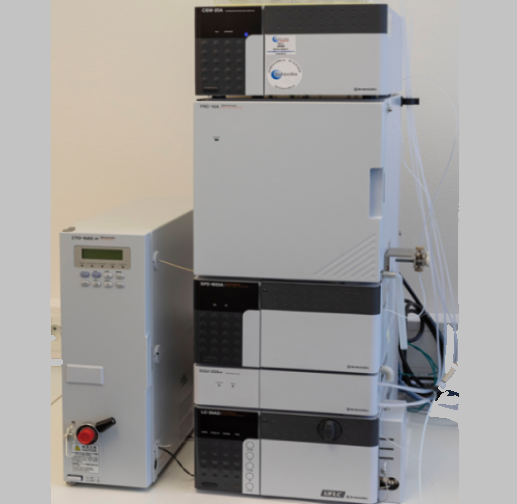Complementary to gas chromatography (GC), liquid chromatography is a separation technique in which a mixture of solvents carries out the liquid sample through a column filled with a solid material. In order the separation to occur, the sample compounds must exhibit different solubilities in the mixture of solvents, along with different affinities to the column filler. Once a separated compound exits (elutes) from the column, it is detected by a diode array detector (DAD) that might require a derivatization of the sample.
Unlike GC-MS, the disadvantage of HPLC-DAD is the need for reference compounds in order to identify the molecules form the sample.
In the field of Cultural Heritage studies, in the last 20 years, the HPLC has been routinely applied, among others, in the characterization of natural and synthetic dyes from tapestry and textiles, for the detection of organic lakes in paintings, along with analysis of lipids in archaeological samples or used as paint binders, and of molecular markers in archaeological residues (wine, oils, protein residues).
